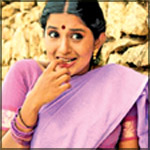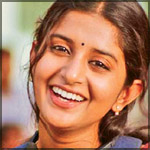|
PROJECTOR
Arthur U. Amarasana’s works felicitation today:
Unearthing Lanka’s cinema roots
Sachitra MAHENDRA
 The
journalist, the scriptwriter, the director. If all these can be bundled
in the local celluloid meadow, Arthur U. Amarasena, better known as
Arthur Usmiyage among his fans, will be somebody to talk about. The
journalist, the scriptwriter, the director. If all these can be bundled
in the local celluloid meadow, Arthur U. Amarasena, better known as
Arthur Usmiyage among his fans, will be somebody to talk about.
Amarasena is going to entertain you at Jayawardena Centre, Town Hall
today at 4pm with his two works: ‘Sinhale Maha Cinema Vansaya’ and ‘60
Vasaraka Cinema Prakashana’, along with the felicitation of 35 cinema
writers.
With arrangements under way for today’s event, Amarasena had a brief
chat with Daily News Projector.
‘Sinhale Maha
Cinema Vansaya’
As the title suggests, the work covers the Cinema period starting
from Kadavunu Poronduwa (The Broken Promise) in 1947 to Rekhava in 1956.
|

Rekhava |
“This is the first volume of a series. The next volume will probably
come in print towards the end of next year.”
However Amarasena has an issue with the records that place ‘Kadavunu
Poronduwa’ first in the Sinhala film lineage.
“We all know that ‘Kadavunu Poronduwa’ is not the first film, though
officially it can be.” Then he related the story of the first unofficial
film shot in Sri Lanka.
An Indian cinematographer Noorbai produced the first ever film with
the local settings, and titled it ‘Rajakiya Vikramaya’ (The Royal
Adventure) in 1923. The trivia has it that Dr. N M Perera, more known as
a politician, starred the main role in the film.


Rukmani Devi and B W Jayamanne in Kadavunu Poronduva |
“But Noorbai took it away to India, as he didn’t have enough local
facilities. Ironically he could not keep it safe, because the reels got
burnt. Noorbai didn’t come back to Sri Lanka, and no film was made until
‘Kadavunu Poronduwa’ in 1947.”
India enjoyed the monopoly of cinema technology, and did not dare
give it to Sri Lanka. But the events took a dramatic change, when the
well-known trio: B W Jayamanna, Sirisena Wimalaweera and Shantha
Senewirathna stole the covetous art; they learnt the technology in
secret.
The project, however, was not that easy. There were many obstacles.
Not a single woman was allowed to step into the celluloid world. The
directors faced a dearth of good scripts. Things started moving towards
a different plane, when Dr. Lester James Peries stepped into the foray
with Rekhava, the 57th film (Noorbai’s production excluded) in 1956.
Amarasena’s challenge in cinema research was confronting factual
errors such as multiple dates of release for a single film, confused
information about cast and crew etc. But he was determined to surf
almost all the cinema archives.
60 Vasaraka Cinema prakashana.
“I had to refer several archives when there were suspicious
information.”
“The first ever Cinema publication is a forthnight magazine titled
‘Cinema’ in 1950 edited by one Robert Jayawardena. Then came a magazine
called ‘Kala’ (art). That was also a fortnightly issue.”
Arthur recollects his days at Visitura, the first cinema weekly.
“We started it in 1962 and I was the first editor. Lake House also
started Sarasaviya a year later. Both Sarasaviya and Visitura had a good
demand and were sold by lakhs.”
Apart from the information about publications over the past years,
Arthur has also included the profiles of cinema writers up to 2005.
His previous books are Cinema Vansaya, Ethera Visithuru’ and ‘Van
Hun’ a directory of cine-writers.
35 Celluloid writers felicitated
“So far only casts and crews have been awarded. But these writers
spearheaded a cinema literature. If not for them, nobody will be able to
gather information about cine-stars and other things.”
Arthur explains further about his mission.
“Our local cinema stars have no gratitude towards media people. They
don’t know they are in a high popular position because of media people.
They just say hello or something like that when they meet media people.”
The shoe is on the other foot in India. The Indian performers have
agencies to spread news and thereby make them hugely popular.
“For example an actress spreads a false rumour through her agency,
and later she comes to media and denies it. That’s how they handle that.
Our local cinema stars haven’t got anything like that. They still have
to bank on media people to get popularity.”
Does Arthur follow a criterion in felicitating the writers?
“I have categorised the awardees into three. The first group used to
contribute and the second is still contributing.
“The third generation is most important; they are budding writers who
have started contributing in a positive note.”
“These people should be encouraged. They have pioneered a cinema
literature today.
But one thing should be clear. These awardees are not the only
writers who have done a service. There are some other writers too. They
will also be felicitated when my next volume is published.”
([email protected])
Magodi Godai:
It’s all about corruption
|

Sarath Chandrasiri manhandled by Vijaya Nandasiri
|
|

Dilshani Ayomi and Gamini Susiriwardena |
|

Director Lal Priyadeva |
The country is full of corruption and malpractices. The Government
watchdog materialises the formation of Central Intelligence Unit (CIU)
headed by Eardley Wedamuni assisted by Gamini Susiriwardena and Vijaya
Nandasiri.
Their first mission achieves first-class when the business tycoon
Ronnie Leech is rescued from being robbed. The mounting fame leaves
CIU’s hands full with assignments.
The CIU reaches the pinnacle when a powerful minister loses his
child. But CIU cannot concentrate on the case – Eardley, Gamini and
Vijaya have a hard time with many other criminal investigations.
Anarkali Akarsha robbing boys, Amila and Malith often getting caught
trying to win sweethearts – and many other cases don’t let the CIU trio
focus on the main project.
However, as director said, something you can’t expect will happen
towards the end of the movie. Lal Priyadeva’s latest cinematic work
talks about the corruptions and malpractices the country suffers. The
movie is being shot these days in Halawatha and is to release in few
days time.
“80% of the work is over. The movie duration should be about two
hours. We have no hope of extending it more than that. Then it would
bore the spectator.”
Magodi Godai producer Janith Marasinghe has found easy to work with
the crew and the cast.
“It’s easy to work with veterans like Sanath Gunathilaka and Vijaya
Nandasiri. They are so supportive in the producing task. The crew is
also very supportive.”
Marasinghe has experience of producing some of Udayakantha
Warnasooriya’s movies.
“I thought of producing a comedy. I could get some changes done in
the script, and I am so happy to produce this kind of a movie.”
A number of media people also star their living roles in the movie.
- SM
Pictures by Malan Karunarathne
Malayalam Cine-Stars glitter on Thamil Screen
K.S. Sivakumaran

|

Nayana Tara |
|

Meera Jasmine |
 |
Artistes (directors, music directors, actors (includes women),
cinematographers, technicians, novelists et al) from different states
and languages in India have contributed to the Thamil Cinema since the
1940s.
Similarly from Thamilnadu players like Vyjayanthimala, Padmini, Rekha,
Hema Malini and music directors like Ilayarajah and A.R.Rahman have
contributed to the Mumbai Cinema.
During the past decade a lot of female artistes from Bollywood had
had a sway in Thamil films.
But since of late the talented actresses from the Kerala state in the
South of India have literarily invaded into Chennai and shine well
because of their innate talents, education, literacy and capability to
handle contemporary themes and adaptability to Thamil language (because
Malayalam is akin to Thamil).
I usually avoid writing about Thamil films produced in Chennai and
Colombo because there are numerous people in Lanka writing about them in
Thamilandu one or two in English.
Secondly I don’t have the patience and time to digest and analyse
these films because almost day after day I see them as a member of the
Public performances board. But I do write about International films I
had seen at the International Film Festivals held annually in various
parts in India.
Some of the beautiful women from Kerala look almost alike and I
sometimes find it difficult to identify their names. I chanced upon an
article in Thamil (might have been reproduced from the Internet) in the
Sunday edition of the Virakesari (Feb 24, 2008) which has pictures of
these actors with their names. Who are these players (they are not mere
Stars, but also talented actors)? Some of them are: Meera Jasmine, Asin,
Navya Naayar, Priyamani, Gopika, Santhiya, Bhavana, Nayana Tara, Renuka
Menon, and Priyanga. Earlier there were Lalitha, Padmini, Raahini,
Revathi and some others from Kerala. In Kerala there is a vibrant Film
Society Movement. The State sponsored International Film Festivals open
new vistas for the cine people and cineastes. The actors both men and
women are trained players.
|

